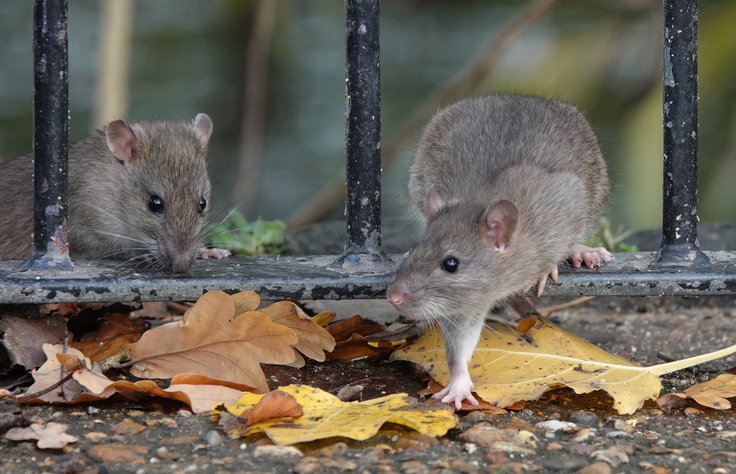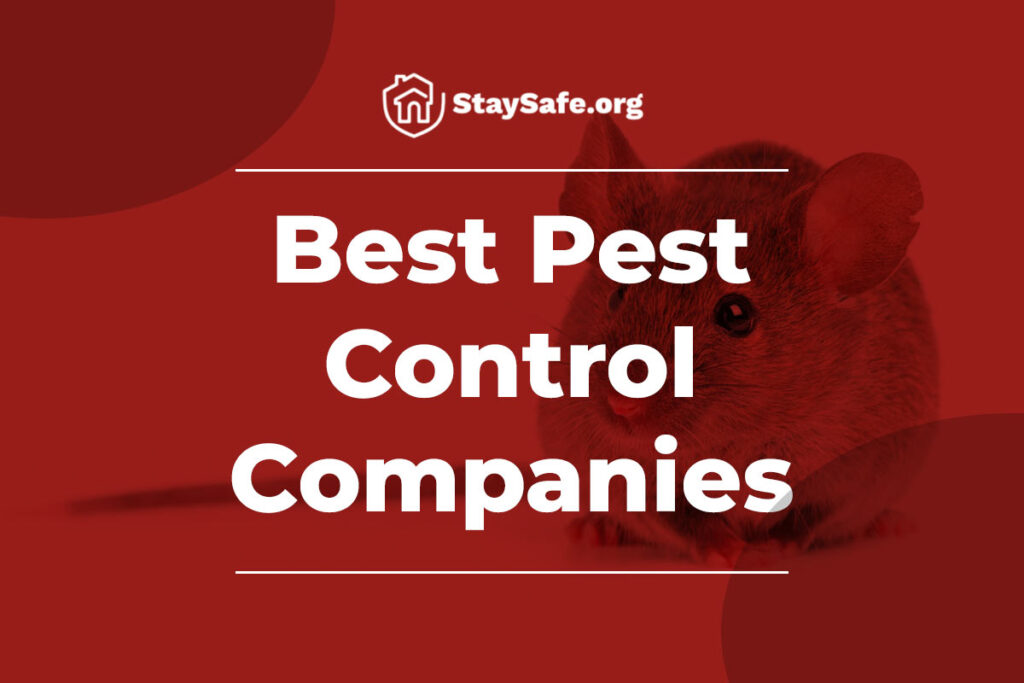When it comes to rodents, mice, and rats are two of the most common pests that homeowners encounter. While they may seem similar at first glance, mice and rats have distinct characteristics that set them apart. Understanding the differences between these rodents is crucial for effective pest control and management. From their physical appearance to their behavior and habits, exploring the contrasting features of mice and rats provides valuable insights into their biology and the specific challenges they present. By gaining a deeper understanding of mice versus rats, homeowners can make informed decisions when it comes to prevention, identification, and control methods to address rodent infestations effectively.

Table of Contents
- Primary Differences Between Rats And Mice
- Behavioral And Dietary Contrasts Of Mice And Rats
- Reproduction Rates Of Mice And Rats
- Typical Habitats And Adaptation To Urban Environments
- Human Health Risks And Diseases Of Rats and Mice
- Rats And Mice In The Ecosystem
- Destructive Impacts Of Mice And Rats
- Conclusion
Primary Differences Between Rats And Mice
Rats and mice are two common household pests that share similarities but also have notable differences. By recognizing these variations, homeowners can implement appropriate control measures to effectively manage and eliminate these unwanted guests.
Rats and mice are both common household pests, but they have several distinct characteristics that set them apart. One of the main differences is their size. Rats are generally larger than mice, with an average length of 9 to 11 inches (excluding the tail) and a weight ranging from 6 to 18 ounces. In contrast, mice are smaller, measuring about 3 to 4 inches (excluding the tail) and weighing around 0.5 to 1 ounce.
Visual Differentiation Between A Rat And A Mouse
Visually, rats and mice have different appearances. Rats have stout bodies with long, scaly tails, and their heads are relatively larger compared to their bodies. They have pointed snouts, and rounded ears, and their fur can be brown, black, or gray, depending on the species. On the other hand, mice have smaller bodies and proportionally larger ears and eyes. Their tails are longer than their bodies, but they are thin and covered in hair. Mice have a more slender and delicate appearance compared to rats.
Lifespan Differences Between Rats And Mice
There are also differences in lifespan between rats and mice. Rats tend to have a longer lifespan compared to mice. Depending on the species and living conditions, rats can live for 1.5 to 3 years on average. In contrast, mice have a shorter lifespan, typically ranging from 1 to 2 years. However, it’s important to note that these lifespans can vary depending on various factors such as genetics, diet, and environmental conditions.
Behavioral And Dietary Contrasts Of Mice And Rats
Rats and mice exhibit distinct behavioral patterns that can help differentiate between the two species. Rats are known to be more cautious and suspicious compared to mice. They are generally wary of new environments and tend to avoid unfamiliar objects or changes in their surroundings. Rats are also skilled climbers and swimmers, capable of navigating various terrains and accessing hard-to-reach areas. Mice, on the other hand, are more curious and exploratory by nature. They are known to be more agile and can squeeze through small openings due to their flexible bodies. Mice are excellent jumpers and can quickly maneuver through intricate spaces in search of food and shelter.
Diet Contrasts
Rats and mice also have distinct dietary preferences. Rats are omnivorous, meaning they consume both plant matter and meat. They have a more varied diet and can scavenge for a wide range of food sources, including grains, fruits, vegetables, nuts, and even small insects or animal remains. In contrast, mice are primarily herbivorous, with a diet that consists mainly of seeds, grains, and vegetation. They are known to be particularly attracted to cereals and grains found in pantries or storage areas.
Aggression Levels
When it comes to aggression, rats are generally considered to be more aggressive than mice. Rats can display territorial behavior and may exhibit aggression towards intruders, including other rats. They have been known to engage in territorial fights, especially when resources are limited. Mice, on the other hand, are typically less aggressive and more likely to exhibit avoidance behavior when confronted with threats. However, it’s important to note that individual behavior can vary, and there may be cases where mice display aggression, especially when they feel cornered or threatened.
Reproduction Rates Of Mice And Rats
Rats and mice are notorious for their ability to reproduce rapidly, making their populations grow exponentially if left unchecked. Understanding the differences in their reproduction rates is crucial for effective pest control.
Rats have a higher reproductive capacity compared to mice. A female rat can produce multiple litters in a year, with each litter typically consisting of 6 to 12 pups. Rats reach sexual maturity at around 2 to 3 months of age, and their gestation period is approximately 21 to 23 days. This fast reproductive cycle allows rats to have several generations in a short span of time, leading to a rapid increase in their population.
Mice, while still capable of breeding quickly, have a slightly lower reproductive capacity compared to rats. A female mouse can also produce multiple litters in a year, with each litter consisting of 5 to 10 pups on average. Mice reach sexual maturity at around 6 to 8 weeks of age, and their gestation period is approximately 19 to 21 days. Although their reproduction rate is slightly slower than rats, mice can still produce a substantial number of offspring within a short period.
It’s important to note that both rats and mice have relatively short gestation periods and can reproduce at a young age, which contributes to their population growth. Additionally, both species are capable of breeding year-round, especially in environments with abundant food and shelter.
The rapid reproduction rates of rats and mice highlight the importance of early intervention in pest control. If a rat or mouse infestation is left unaddressed, the population can quickly become unmanageable, leading to significant damage and health risks. Implementing effective and timely control measures, such as trapping, baiting, and exclusion, can help prevent the exponential growth of rodent populations and minimize their impact on homes and surroundings.
Typical Habitats And Adaptation To Urban Environments
Rats and mice are adaptable rodents that have successfully adapted to various environments, including urban areas. Understanding their typical habitats and their ability to adapt to urban environments is crucial for effective pest management. Both species have developed strategies to exploit resources in urban settings, making it important to understand their behavior and adaptability in order to implement effective prevention and control measures.
Types Of Environments Rats And Mice Typically Inhabit
Rats and mice are highly adaptable rodents that can be found in a wide range of habitats, including both natural and human-made environments. Rats tend to prefer areas with abundant food sources, water, and shelter, such as sewers, basements, attics, gardens, and garbage dumps. They are skilled burrowers and are known to create intricate tunnel systems underground. Rats are also known to establish nests in dark, secluded areas, using materials like shredded paper, fabrics, and other soft materials.
Mice, on the other hand, are more versatile in their habitat preferences. They are commonly found in fields, meadows, forests, and grassy areas where they can seek shelter in burrows or nest in hidden areas. Mice are also adept at exploiting human-made structures, including houses, buildings, and storage facilities, where they can find food and suitable nesting sites. They can access homes through small cracks and openings, making attics, basements, and wall voids ideal locations for nesting.
How Rats And Mice Adapt To Urban Environments
Rats and mice have demonstrated remarkable adaptability to urban environments. They are highly opportunistic and can take advantage of the resources available in densely populated areas. Urban environments provide rats and mice with ample food sources such as discarded food, garbage, and stored grains. They can also find shelter in buildings, sewers, and other structures that provide protection from predators and inclement weather.
Both rats and mice have the ability to navigate and explore intricate human-made structures. Their small size and flexible bodies allow them to squeeze through narrow gaps, cracks, and openings, giving them access to various parts of buildings. They can quickly adapt their behavior to avoid human detection, making it challenging to eradicate them completely from urban settings.
Can Mice And Rats Co-Exist?
While rats and mice can occupy similar urban environments, they typically prefer different habitats within the same vicinity. Rats are generally more dominant and territorial, and they may aggressively displace mice from their preferred nesting areas. Additionally, rats require larger food sources due to their larger size and more significant nutritional needs, which can limit the available resources for mice.
However, there may be instances where rats and mice coexist in the same habitat, particularly if there is an abundance of food and shelter. In these cases, competition for resources may arise, leading to potential conflicts between the two species.
Human Health Risks And Diseases Of Rats and Mice
Understanding the potential health risks and diseases associated with rats and mice is crucial for taking appropriate precautions to protect human health. By implementing effective pest control measures, practicing good hygiene, and seeking professional assistance when needed, homeowners can minimize the risk of disease transmission and ensure a safe living environment.
Diseases Associated With Rats And Mice
Both rats and mice can pose significant health risks to humans due to their potential to carry and transmit various diseases. Rats are known carriers of diseases such as Leptospirosis, Hantavirus Pulmonary Syndrome, Rat-Bite Fever, and Salmonellosis. These diseases can be transmitted to humans through direct contact with rat urine, droppings, or bites, as well as indirectly through contaminated food and water. Additionally, rats can serve as hosts for fleas, ticks, and mites, which can further spread diseases to humans.
Mice are also capable of transmitting diseases, although the risks may be slightly lower compared to rats. Diseases associated with mice include Lymphocytic Choriomeningitis (LCM), Hantavirus, Salmonellosis, and Tularemia. Similar to rats, mice can contaminate food and surfaces with their urine, droppings, and saliva, leading to potential disease transmission to humans.
Comparison Between Rat Droppings And Mouse Droppings
Rat droppings and mouse droppings can provide valuable clues for identifying rodent infestations and distinguishing between the two species. Rat droppings are typically larger, measuring around ¾ inch to 1 inch in length, with blunt ends. They have a capsule-like shape and are often compared to raisins in appearance. In contrast, mouse droppings are smaller, usually about ¼ inch in length, and have pointed ends. They are cylindrical and resemble small grains of rice.
It is important to note that rodent droppings can pose health risks, as they can carry bacteria and viruses. Thus, it is crucial to handle droppings with caution, wear protective gloves, and properly disinfect the area to prevent contamination.
Do Mice And Rats Carry The Same Parasites?
Rats and mice can both harbor parasites, but the specific types of parasites they carry may differ to some extent. For example, both rats and mice can carry fleas, which can transmit diseases such as Murine Typhus and Plague to humans. However, certain parasites may have a stronger affinity for one species over the other.
Fleas, ticks, and mites are common parasites that can infest both rats and mice. These parasites can latch onto the fur of rodents and can be easily transmitted to humans through bites. Additionally, the presence of these parasites can exacerbate the health risks associated with rodent infestations.
While rats and mice can carry some of the same parasites, it is important to note that the risk and prevalence may vary between the two species. Proper identification and control measures are essential for mitigating the health risks associated with rodent infestations and preventing the spread of diseases to humans.
Rats And Mice In The Ecosystem
Understanding the ecological dynamics involving rats and mice is crucial for managing their populations and maintaining the health and balance of ecosystems. Implementing effective pest control measures when necessary and promoting natural predator-prey relationships can help mitigate any negative impacts while preserving the ecological functions that these rodents contribute to the natural world.
How Rats And Mice Affect The Ecosystem
Rats and mice, as rodents, play significant roles in the ecosystem, although their impact can be both beneficial and detrimental. They are considered important prey species for many predators, contributing to the food web and maintaining the balance of predator-prey relationships. However, their ability to adapt and thrive in various habitats can lead to negative consequences.
Rats and mice are known for their ability to consume and damage crops, leading to economic losses in agricultural settings. They can also prey on small birds, eggs, and other small animals, potentially impacting local populations. In addition, their burrowing activities can disturb soil structure and vegetation, altering habitats and affecting the overall ecosystem dynamics.
Natural Predators Of Rats And Mice
Rats and mice have several natural predators that help control their populations. These predators vary depending on the geographic location and habitat, but common predators include birds of prey such as owls, hawks, and falcons. These raptors have keen eyesight and sharp talons, making them effective hunters of rodents.
Other natural predators of rats and mice include snakes, foxes, coyotes, weasels, and domestic pets such as cats and certain dog breeds. These predators play a vital role in regulating rodent populations by hunting and preying upon them.
Positive Impacts Of Rats And Mice On The Environment
While rats and mice are often regarded as pests, they do have some positive impacts on the environment. As scavengers, they help clean up and decompose organic matter, contributing to nutrient cycling. They also serve as a food source for numerous predators, supporting the natural balance of ecosystems.
Furthermore, research suggests that rats and mice may have a role in seed dispersal. They can inadvertently transport and scatter seeds as they forage, potentially aiding in the distribution and regeneration of plant species.
It is important to recognize that the ecological impacts of rats and mice can vary depending on the specific circumstances and the local ecosystem. Balancing their populations and minimizing their negative effects on human activities while preserving their ecological role is a complex challenge.
Destructive Impacts Of Mice And Rats
When comparing the destructive impacts of rats and mice, it is important to consider their size, behavior, and feeding habits. Both species have the potential to cause damage, but the extent and nature of their destructive behavior can differ.
Rats, particularly larger species like Norway rats and Roof rats, are generally considered more destructive than mice. Their larger size and stronger gnawing abilities enable them to cause more significant damage to structures, electrical wiring, and other materials. Rats are known to create extensive burrows and tunnels, which can undermine foundations and structures, leading to structural damage.
Additionally, rats are known to be more aggressive than mice, which can further contribute to their destructive behavior. They may damage stored goods, food packaging, and other household items while searching for food and nesting materials.
On the other hand, while mice may not cause as much structural damage as rats, they can still create issues within homes and buildings. Their smaller size allows them to squeeze through small openings, making it easier for them to access food sources and build nests in hidden areas. Mice are known to chew on electrical wires, insulation, and furniture, potentially causing fires and other hazards.
In terms of feeding habits, both rats and mice are omnivorous, capable of consuming a wide range of food items. They can damage crops, contaminate stored food, and pose a risk to agricultural production. Rats, due to their larger size and more aggressive nature, may have a higher capacity to cause damage to agricultural fields and stored grain.
To effectively address the destructive impacts of rats and mice, it is crucial to implement integrated pest management strategies. These may include sealing entry points, reducing access to food and water sources, implementing traps and baits, and seeking professional assistance when necessary. By taking proactive measures to control and prevent infestations, the destructive impacts of both rats and mice can be mitigated.
Conclusion
While rats and mice are both common rodent pests, they differ in various aspects, including behavior, habitat, health risks, and destructive impacts. Rats, with their larger size and more aggressive nature, are generally considered to be more destructive than mice, capable of causing significant damage to structures and property. They can also carry and transmit a wide range of diseases. Mice, although smaller, can still cause issues within homes and buildings and pose health risks through contamination and chewing on electrical wires. Both rats and mice have the ability to adapt to urban environments and can thrive in various habitats. Understanding the differences between rats and mice is essential for effective pest management and implementing appropriate control measures.




